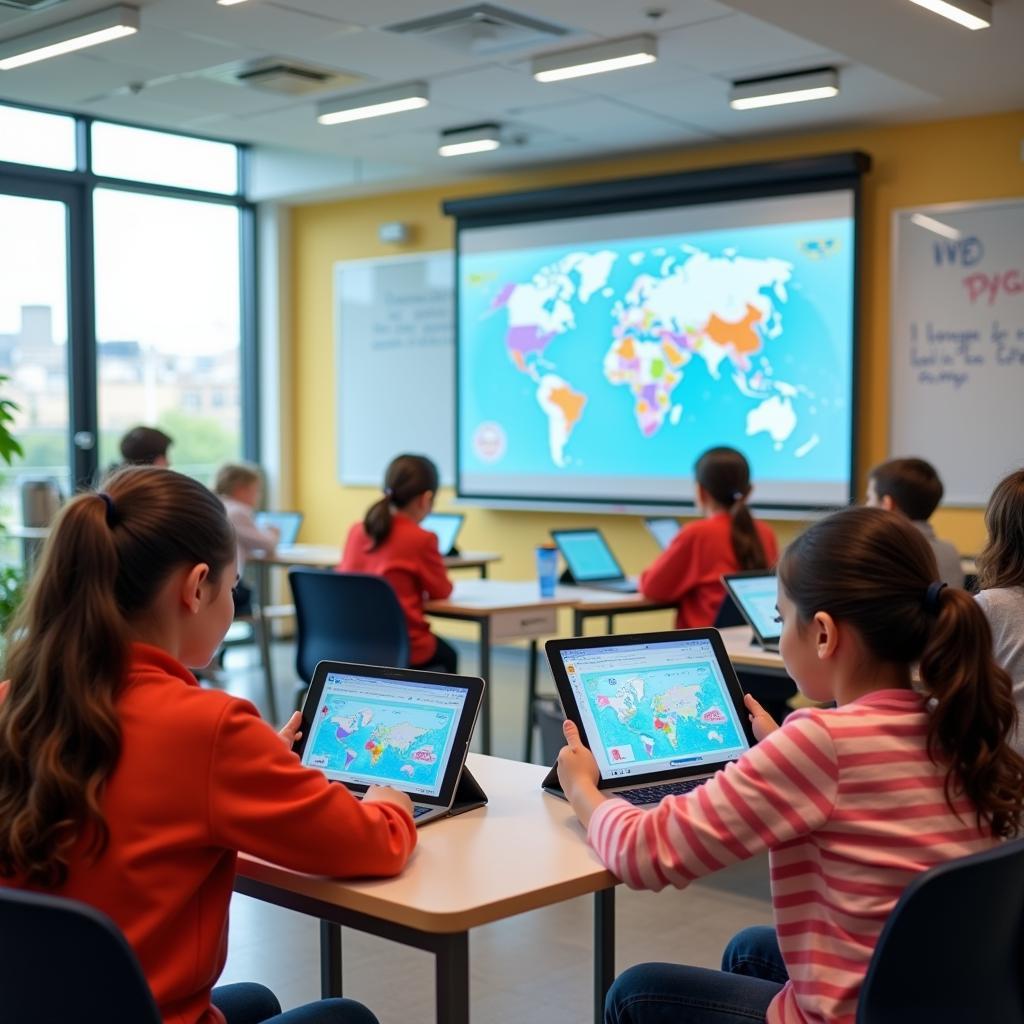Gamification in education has become an increasingly popular topic in IELTS Writing Task 2 examinations. Analysis of past exam questions reveals this theme appearing frequently, especially in questions about modern teaching methods and technological integration in learning. As education systems worldwide embrace digital transformation, importance of digital transformation in education becomes more relevant to IELTS candidates.

Analysis of Recent IELTS Task 2 Question
Some people believe that using games in education can improve student engagement and learning outcomes. Others think it distracts students from real learning. Discuss both views and give your opinion.
Question Analysis
This question requires a balanced discussion of both perspectives regarding The role of gamification in education. Key points to address:
- Benefits of educational games
- Potential drawbacks
- Personal stance with justification
Sample Essay 1 (Band 8.5)
The integration of games in educational settings has sparked considerable debate among educators and parents. While some advocate for its potential to enhance learning experiences, others express concerns about its possible negative impacts. In my opinion, when implemented thoughtfully, gamification can significantly benefit the learning process.
Proponents of educational gaming highlight several compelling advantages. Firstly, gamified learning environments can dramatically increase student engagement by making learning more interactive and enjoyable. For instance, language learning applications like Duolingo have successfully motivated millions of users through achievement systems and competitive elements. Additionally, games can provide immediate feedback and personalized learning paths, allowing students to progress at their own pace while maintaining motivation.
However, critics raise valid concerns about potential drawbacks. The primary argument against gamification is that it might oversimplify complex subjects, potentially leading to superficial understanding. Moreover, some students might become overly focused on winning or collecting rewards rather than genuinely comprehending the material. There are also concerns about screen time and potential addiction to digital gaming platforms.
In my view, the benefits of educational gamification outweigh its drawbacks when properly implemented. The key lies in designing games that maintain educational rigor while leveraging engaging gameplay elements. For example, many schools have successfully used mathematical puzzle games to teach complex concepts, resulting in improved test scores and increased student interest in the subject. Similar to how online learning affects student engagement, gamification can create more dynamic and interactive learning experiences.
Therefore, while concerns about gaming in education deserve consideration, its potential to transform learning experiences cannot be ignored. The focus should be on developing and implementing educational games that strike the right balance between engagement and academic value.
Sample Essay 2 (Band 6.5)
These days, many schools use games to teach students. Some people think this is good for learning, but others worry it’s not serious enough. I will discuss both sides and share what I think.
Games in education can help students learn better. When students play educational games, they feel more interested in their studies. For example, math games make numbers fun, and students want to practice more. Also, games give students quick feedback, so they know if they are right or wrong immediately.
But some people think games are bad for education. They say students don’t learn properly when everything is like a game. Sometimes students just want to win the game and don’t care about learning. Also, too much time playing games means less time for traditional studying.
I think using games in education is mostly good if teachers use them correctly. Games should not replace all normal teaching, but they can help make learning more interesting. For instance, my cousin learned English using game apps, and now his English is very good. Like digital education platforms for lifelong learning, games can make learning easier and more fun.
In conclusion, while there are some problems with educational games, I believe they are useful tools for learning when used properly.
Key Vocabulary
- Gamification (n) /ˌɡeɪmɪfɪˈkeɪʃən/ – the application of game elements to non-game contexts
- Implementation (n) /ˌɪmplɪmenˈteɪʃən/ – the process of putting a plan into action
- Pedagogical (adj) /ˌpedəˈɡɒdʒɪkəl/ – related to teaching methods
- Interactive (adj) /ˌɪntərˈæktɪv/ – allowing two-way flow of information
- Superficial (adj) /ˌsuːpəˈfɪʃəl/ – lacking depth or substance
- Rigorous (adj) /ˈrɪɡərəs/ – extremely thorough and careful
- Engagement (n) /ɪnˈɡeɪdʒmənt/ – the state of being involved in something
This topic continues to evolve as new technologies emerge. Practice writing your own response to this question and share it in the comments for feedback. Consider exploring similar topics like how to use investment apps effectively to understand how technology impacts various aspects of modern life.